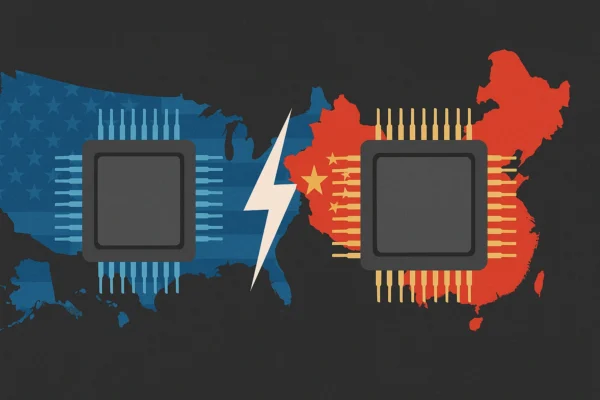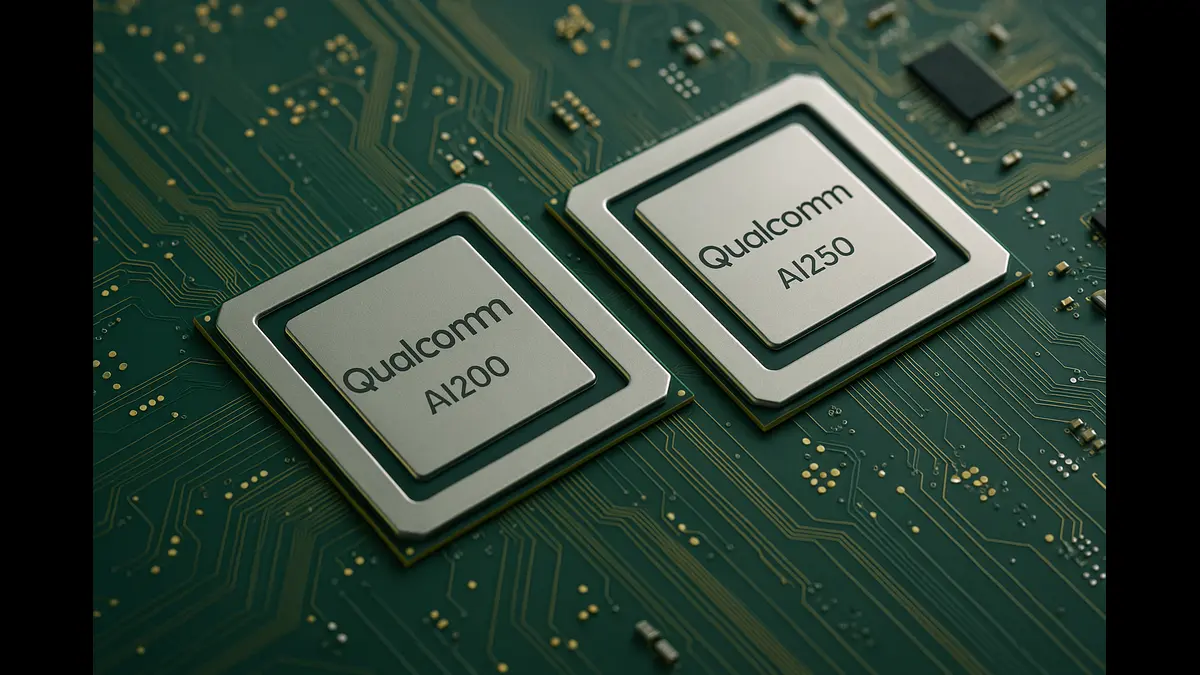
China lifts tariffs on U.S. chips; key impacts and new opportunities emerge for India’s semiconductor sector.
As of April 25, 2025, the US-China chip war has intensified, with China implementing selective tariff exemptions on certain US semiconductors and unveiling comprehensive economic measures to counteract US sanctions. These actions are reshaping global semiconductor supply chains, directly impacting India’s burgeoning $38 billion semiconductor industry. While challenges such as supply chain disruptions and increased production costs arise, opportunities for India to position itself as a global chip hub are also emerging.
China’s Latest Countermeasures
1. Selective Tariff Exemptions on US Semiconductors
In a strategic move, China has quietly lifted the 125% retaliatory tariffs on specific US-made semiconductors, reducing them to zero. This exemption applies to at least eight categories of microchips, aiming to protect China’s tech sector amid escalating trade tensions. While the original report from Caijing was removed, importers and customs database screenshots confirm the changes. This indicates China’s intent to safeguard essential industries, including chip manufacturing, while maintaining pressure on the US through other economic measures.
2. Comprehensive Economic Measures
President Xi Jinping has announced a comprehensive plan to bolster China’s economy against the adverse effects of the US trade war. Key interventions include boosting unemployment benefits, increasing incomes for low and middle-income groups, enhancing financing support for enterprises, and stimulating domestic demand. The strategy also focuses on developing the service industry, accelerating urban renewal, and reforming the housing sector. These measures aim to sustain economic growth and reduce reliance on foreign technologies.
Impacts on India’s Semiconductor Industry
1. Supply Chain Disruptions
China’s selective tariff exemptions, while beneficial for its domestic industries, may lead to supply chain realignments affecting India. India imports a significant portion of its semiconductor components from China. Any shifts in China’s export policies or supply chain priorities could disrupt the availability of critical components for Indian manufacturers, leading to potential production delays and increased costs.
2. Increased Production Costs
The ongoing trade tensions and China’s economic measures may lead to fluctuations in the prices of semiconductor materials and components. Indian manufacturers could face increased costs for imported components, impacting profit margins and competitiveness. For instance, Tata Electronics’ upcoming facility in Assam, set to commence production by late 2025, may encounter higher input costs, affecting its operational efficiency.
3. Geopolitical Risks
India’s strategic alignment with the US particularly in technology and defense sectors, may attract scrutiny from China. While India seeks to strengthen its semiconductor capabilities, it must navigate the geopolitical landscape carefully to avoid potential economic or diplomatic repercussions from China.
Opportunities for India
1. Attracting Global Investments
The realignment of global supply chains presents an opportunity for India to attract investments from companies seeking to diversify their manufacturing bases. Apple’s decision to shift a significant portion of its iPhone production to India exemplifies this trend. Such moves can catalyze the growth of India’s semiconductor ecosystem, fostering job creation and technological advancement.
2. Strengthening Domestic Capabilities
India’s Semiconductor Mission, with substantial financial incentives, aims to bolster domestic manufacturing and reduce reliance on imports. Investments in infrastructure, research and development, and skill development are crucial to achieving self-sufficiency in semiconductor production.
3. Strategic Partnerships
Collaborations with countries like Japan, South Korea, and the US can facilitate technology transfers, joint ventures, and knowledge sharing. Such partnerships can enhance India’s capabilities in semiconductor design, fabrication, and testing, positioning it as a competitive player in the global market.
China’s recent measures, including selective tariff exemptions and comprehensive economic strategies, underscore its intent to mitigate the impact of US sanctions and fortify its technological autonomy. For India, these developments present both challenges and opportunities. By proactively addressing supply chain vulnerabilities, investing in domestic capabilities, and fostering strategic partnerships, India can navigate the evolving geopolitical landscape and emerge as a significant player in the global semiconductor industry.
Discover more from Poniak Times
Subscribe to get the latest posts sent to your email.







